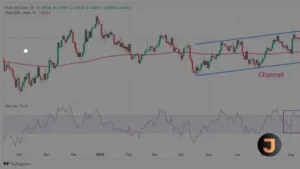Oil Prices Dip Amid Surprising US Crude Inventory Build
In a recent turn of events, oil prices have seen a notable decline, with Western Texas Intermediate (WTI) dropping to a seven-week low. The unexpected increase in US crude inventories has played a pivotal role in this downward trend. On Thursday, WTI was trading at approximately $79.20, marking a cautious stance among investors as they digest the latest data.
The US Energy Information Administration (EIA) revealed a surprising build in crude stocks for the week ending April 26. Inventories swelled by 7.256 million barrels, reaching 460.9 million barrels, starkly contrasting with the 6.368 million barrel draw reported the previous week. This development has surpassed market expectations, which had anticipated a decrease of 2.3 million barrels. The current figures stand as the highest recorded since June 2023, raising alarms over potential softening in oil demand.
Adding to the pressure on oil markets are the diminishing geopolitical tensions in the Middle East. Reports from Bloomberg indicate that the United States and Saudi Arabia are engaged in talks over an agreement that could offer security assurances to Riyadh and potentially pave the way for diplomatic relations with Israel, contingent upon the cessation of hostilities in Gaza.
While the current scenario suggests a bearish outlook for WTI prices, it’s important to note that any escalation in geopolitical risks could quickly reverse this trend. Concerns over potential disruptions in oil supply due to regional conflicts could once again buoy the commodity’s value.
Looking ahead, oil traders are poised to focus on the upcoming US employment data for April, which includes key indicators such as non-farm payrolls (NFP), the unemployment rate, and average hourly earnings. These metrics are expected to significantly influence WTI prices, given their impact on the USD. As such, market participants will be keenly awaiting these figures to gauge potential trading opportunities in the oil market.






